
Home - Search - Browse - Alphabetic Index: 0- 1- 2- 3- 4- 5- 6- 7- 8- 9
A- B- C- D- E- F- G- H- I- J- K- L- M- N- O- P- Q- R- S- T- U- V- W- X- Y- Z
Electric/Xenon
Electric/Xenon propellant. The many versions of electric engines use electric or magnetic fields to accelerate ionized elements to high velocity, creating thrust. The power source can be a nuclear reactor or thermal-electric generator, or solar panels. Xenon became the propellant of choice for production electric engines in both Russia and the United States in the 1990's and 21st Century.
Fuel Freezing Point: -112 deg C. Fuel Boiling Point: -107 deg C.
Subtopics
| 11B97 Korolev nuclear electric/xenon rocket engine. Engine for Interorbital Tug for launch by Energia. Developed 1978-1986. Powered by nuclear reactor providing 50-150 kWt for 3 to 5 years operation. |
| Aerojet 50kW Redmond electric/xenon rocket engine. Effort 2001-2003 developed a 50 kW Hall thruster in parallel to NASA's in-house development of the NASA-457M thruster. |
| Arsenal NE Tug Electric/Xenon propellant rocket stage. In 1994-1995 KB Arsenal collaborated with NII PME MAI, NPO Lavochkin, and others in international group to study interplanetary flight using nuclear-electric and solar-electric engines. The final selected design was a nuclear-electric interplanetary tug. |
 | BPT-2000 Redmond electric/xenon rocket engine. In Production. Hall effect thruster. Nominal power input 2200 W at 350 V. |
 | BPT-4000 Redmond electric/xenon rocket engine. In Production. Hall effect thruster. Nominal power input 4500 W at 350 V. |
| BPT-600k Redmond electric/xenon rocket engine. In Development, 2005-2006. Began as 1995 contract for 600kWe Hall thruster electric propulsion system designed for future interplanetary manned spacecraft. |
| D-100-II TsNIIMash electric/xenon rocket engine. Development. Hall effect thruster with anode layer, designed for satellite orbital raising. Taken to engineering model stage. |
| D-20 TsNIIMash electric/xenon rocket engine. Development. Hall effect thruster with anode layer, designed for satellite station-keeping and attitude control. Taken to engineering model stage. |
| D50 Yuzhnoye electric/xenon rocket engine. Development. Hall engine electric jet propulsion system intended for use by spacecraft for inter-orbital transfer, orbit correction, and stabilization. |
 | Dawn American asteroid probe. Asteroid belt unmanned probe designed to first orbit and survey the asteroid Vesta, and then fly on to the largest asteroid, Ceres. Orbit asteroids Ceres and Vesta. Multiple asteroid lander built by Orbital Sciences Corporation (OSC) for NASA, USA. Launched 2007. |
 | Deep Space 1 American asteroid probe. Deep Space 1 (DS1) was a primarily a technology demonstration probe powered by an ion engine, although the spacecraft also flew by asteroid and cometary targets. |
 | ERTA stage Electric/Xenon propellant rocket stage. At the beginning of the 1990's a new type of nuclear generator was studied, that would have a capacity of 150 kW in the transport role and provide 10-40 kW to power spacecraft systems while coasting. This was designated ERTA (ElecktroRaketnovo Transportnovo Apparat). |
 | Hall Electric Thruster TsNIIMash / Rocketdyne electric/xenon rocket engine. Development. Satellite orbit raising and station-keeping applications. Electric, pressure-fed. Variable 80 mN - 3.0 N thrust, specific impulse 1600 to 3500 seconds. |
| HIVHAC NASA Cleveland electric/xenon rocket engine. HIVHAC offered mission benefits compared to the 4000s NEXT engine for deep space missions. |
| Interorbital Tug Russian space tug. Cancelled 1991. Upper stage / space tug - nuclear electric space tug, to be launched by Energia-2. Developed 1978-1991, ultimately cancelled. |
| Interorbital Tug stage Electric/Xenon propellant rocket stage. Beginning in 1978 the 11B97 nuclear electric engine was studied for use in a reusable interorbital space tug for launch by Energia-Buran. In 1982, according to the decree of 5 February 1981, NPO Energia developed for the Ministry of Defense the interorbital tug Gerkules with 550 kWt maximum output and continuous operation in the 50-150 kWt range for 3 to 5 years. In 1986 a civilian interorbital tug was studied to solve the specific application of transporting heavy satellites of 100 metric tons to geostationary orbit, launched by Energia. |
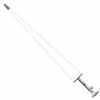 | KK Russian manned Mars expedition. Study 1966. Work on the TMK project continued, including trajectory trade-off studies and refinement of the design. |
 | Marpost Russian manned Mars expedition. Study 2000. In December 2000 Leonid Gorshkov of RKK Energia proposed a manned Mars orbital expedition as an alternative to Russian participation in the International Space Station. |
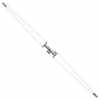 | Mars 1986 Russian manned Mars expedition. Studied 1978-1986. NPO Energia resumed study of a Mars project once development began of the new Energia booster in place of the cancelled N1. |
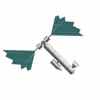 | Mars 1989 Russian manned Mars expedition. Study 1989. In 1989 yet another Mars project was proposed by NPO Energia. |
 | MEK Russian manned Mars expedition. Study 1969. The Mars Expeditionary Complex (MEK) was designed to take a crew of from three to six to Mars and back with a total mission duration of 630 days. |
| NASA-457M NASA Cleveland electric/xenon rocket engine. 50 kW Hall thruster developed 2001-on. |
 | NEXT UM-NASA electric/xenon rocket engine. NASA Evolutionary Xenon Thruster, 40 cm diameter ion engine, double the beam extraction area of the NSTAR engine. Developed 1998-2003. |
| NSTAR NASA Cleveland electric/xenon rocket engine. Solar Electric Propulsion Technology Application Readiness program developed this 2.3 kW ion engine as primary propulsion for the Deep Space 1 comet and asteroid rendezvous probe, flew 1998. |
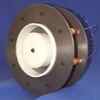 | P5 Hall thruster UM-USAF electric/xenon rocket engine. 5 kW Hall thruster for research purposes. |
| P78-2 Hughes electric/xenon rocket engine. Flown in 1979. The thruster for the Scatha experiment consisted of one electron bombardment engines using xenon propellant. |
 | STCAEM NEP American manned Mars expedition. Study 1991. |
 | STCAEM SEP American manned Mars expedition. Study 1991. The solar electric propulsion (SEP) Mars transfer concept was the only non-nuclear advanced propulsion option in the STCAEM study. |
 | TAL-100 TsNIIMash electric/xenon rocket engine. Development. Hall effect thruster with anode layer. Export version of D-100-I thruster developed under NASA/BMDO contract. Taken to engineering model stage. |
 | TAL-38 TsNIIMash electric/xenon rocket engine. Development. Hall effect thruster with anode layer. Export version of D-38, developed under NASA contract for satellite station-keeping and attitude control. Taken to engineering model stage. |
 | TAL-WSF TsNIIMash electric/xenon rocket engine. Hall effect thruster with anode layer. Export version of D-55 thruster developed under NASA/BMDO contract for flight test under RHETT-II program. Used for WSF satellite orbital altitude maintenance. |
| TM-50 TsNIIMash electric/xenon rocket engine. Development. Hall effect thruster with anode layer, designed for satellite orbital raising. Taken to engineering model stage. |
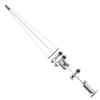 | TMK-E Russian manned Mars expedition. Study 1960. Feoktistov felt that the TMK-1 manned Mars flyby design was too limited. His design group proposed in 1960 a complete Mars landing expedition, to be assembled in earth orbit using two or more N1 launches. |
| XIPS-25 1.3 kW Hughes electric/xenon rocket engine. XIPS-25 program, conducted by Hughes, developed thrusters, BBPPUs, and a feed system pressure regulator for stationkeeping of 2500 kg class communication satellites. |
Engines:
P78-2,
XIPS-25 1.3 kW,
Hall Electric Thruster,
XIPS-25 4.2 kW,
NASA-457M,
HIVHAC,
BPT-600k,
11B97,
Aerojet 50kW,
BPT-2000,
BPT-4000,
D-20,
D50,
D-100-II,
NEXT,
NSTAR,
P5 Hall thruster,
TAL-100,
TM-50,
TAL-38,
TAL-WSF,
XIPS-13 0.44 kW.
Spacecraft:
TMK-E,
KK,
MEK,
Mars 1986,
Mars 1989,
Interorbital Tug,
STCAEM NEP,
STCAEM SEP,
Deep Space 1,
Marpost,
Dawn.
Stages:
Interorbital Tug stage,
ERTA stage,
Arsenal NE Tug.
Back to top of page
Home - Search - Browse - Alphabetic Index: 0- 1- 2- 3- 4- 5- 6- 7- 8- 9
A- B- C- D- E- F- G- H- I- J- K- L- M- N- O- P- Q- R- S- T- U- V- W- X- Y- Z
© 1997-2019 Mark Wade - Contact
© / Conditions for Use
